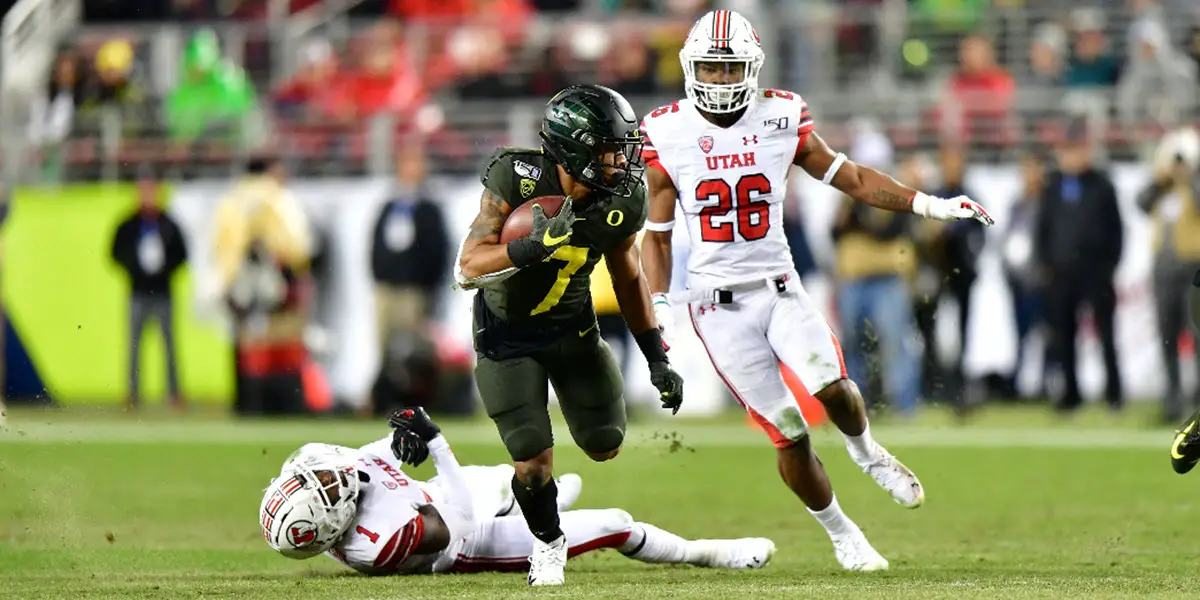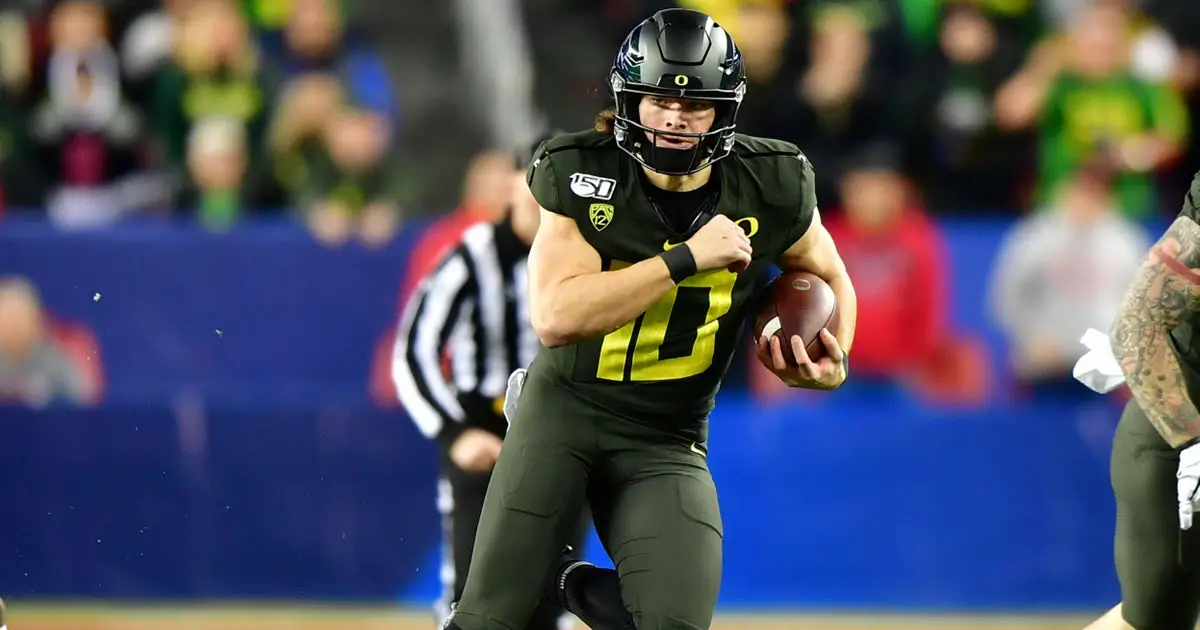It took just a couple of adjustments for the Oregon Ducks running game to take it to the next level against the Utah Utes in the Pac-12 Championship game. Against a Utah defense that had only given up a little more than 50 yards per game on the ground, Oregon managed to rush for 269 yards. Running back CJ Verdell had 208 yards on the ground, gaining 11.6 yards per carry.
The one adjustment that stood out to everyone watching the game was that Coach Marcus Arroyo decided to use Justin Herbert’s feet on zone read plays. This is not a strategy that Oregon has used at all this season. In fact, I cannot think of a single instance outside of this latest game that Herbert has rushed the ball on a designed run. In the video above, you can see that the Utah defense wasn’t quite expecting Herbert to pull the ball, and he picks up the first down on a 13-yard run.
Arroyo’s decision to use Herbert’s feet had a major effect on the game.
Though Herbert only accounted for 20 yards rushing on seven carries, his ability to pull the ball gave the Ducks offense some clear advantages. Because of Oregon’s willingness to run the QB, defensive linemen were being frozen while trying to get a read on where the ball was going. This in turn ended up opening more creases for the Oregon running backs.
The play in the video above is a prime example of how the threat of the QB run affects the defense. Because the unblocked defensive end is occupied with having to read whether Herbert is giving or pulling the ball, he can’t react to Verdell right away. This slight hesitation gives Verdell an extra beat to get to the endzone.
Also, not blocking the backside defensive end allows the offensive line to get an extra double team at the line of scrimmage and then eventually lets an extra linemen get to the second level of the defense. All of these components allowed Oregon to rack up yards on the ground for most of the night.

Herbert has a read on the defense.
The Ducks also broke tendency with some things that they do with receivers in motion, building a constraint play off of those tendencies that gave them another avenue to open up rush lanes. That’s a topic for a later date, as it was the quarterback run game that caught everyone’s attention.
The cool thing was that Coach Mario Cristobal and company didn’t have to give up their identity to make it work. They stuck with their favorite formations and run plays but found ways to further enhance them. They were still a tough and physical downhill team but were able to get even more physical because of the enhancements.

CJ Verdell looking to make a house call.
For most of the season, Verdell was already producing at the level of Oregon backs of the past without having the QB run game to loosen up the defense. That’s impressive. To be able to physically outmatch opponents for most of the season and then add a steady dose of zone read on top — that’s a cool thing.
Adding the zone read on top of all of Coach Arroyo’s RPO’s is just another thing that makes defenders stop and think. It’s a component that I, for one, wouldn’t mind seeing stick around in the Oregon offense.
Coach Eric Boles
Newark, OhioTop Photo by Tom Corno
Eric resides in Central Ohio, just outside the capital city of Columbus. He is a former offensive assistant and return game coordinator for the Ohio State – Newark/Central Ohio Technical College Titans football program.
He is an OSU-N graduate, having completed a Bachelor of Arts program in psychology.

